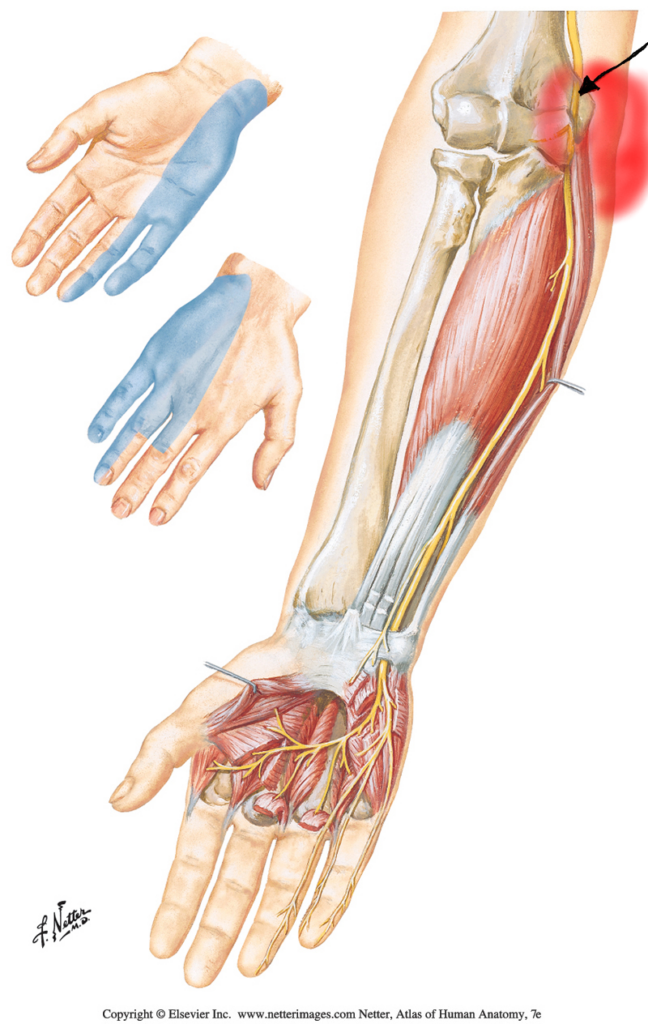
Cubital tunnel syndrome is the second most common nerve compression syndrome in the upper extremity. This syndrome occurs when the ulnar nerve becomes compressed in the cubital tunnel (Radomski et al., 2014). The cubital tunnel is formed by the lateral epicondyle as well as a combination of ligaments and muscles that keep the ulnar nerve secure and protected as it travels from the upper arm, past the elbow, and down the ulnar aspect of the forearm.
The ulnar nerve’s location in the cubital tunnel is very superficial, and when bumped can cause a great deal of pain. This is commonly referred to as your funny bone!
Symptoms:
- Numbness along inside of your arm, sometimes radiates to the ring and little finger.
- Difficulty pinching or grasping cups.
- Shooting pains up and down the inside of the arm starting from the cubital tunnel.
- Muscle Atrophy (Loss of muscle mass)
- Constant dull aches around medial aspect of the elbow/cubital tunnel.
- Ring and Small finger begin to form a claw (image below/similar to a benediction sign)
Causes of Compression:
- Compression tourniquets
- Leaning on elbows causing pressure from hard surfaces (resting elbows on the table)
- Prolonged flexion (casts, assembly line work requiring long periods of elbow flexion)
- Elbow fractures
- Traumatic injuries to the elbow
How to Reduce Symptoms
- Try to keep elbow from flexing past 90 degrees for prolonged periods of time, especially when sleeping. This puts tension on the ulnar nerve causing inflammation and compression.
- Ulnar Nerve Glides (1-2 times a day! Don’t over do these, it’ll make it worse)
References
Guardia, C. F. (2018, June 8). Ulnar Neuropathy. Retrieved May 5, 2020, from https://emedicine.medscape.com/article/1141515-overview#a4
Radomski, M.V., Trombly Latham, C.A. (2014). Occupational therapy for physical dysfunction, 7th edition. Philadelphia, PA. Lippincott. ISBN: 978-1-4511-2746-1.
